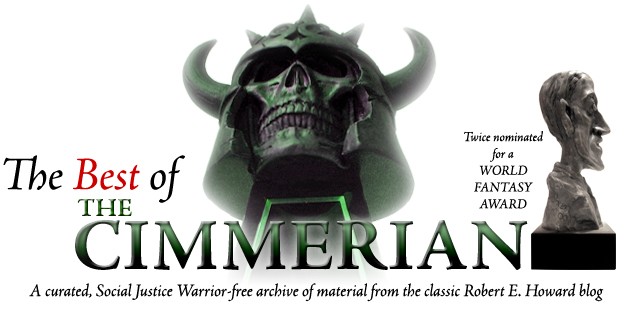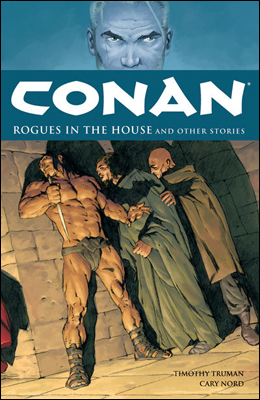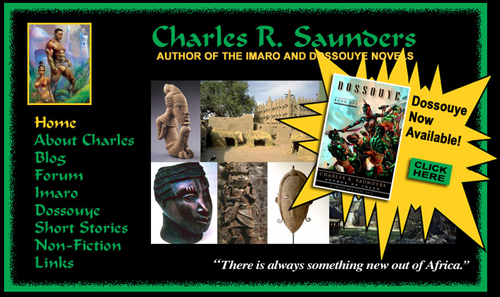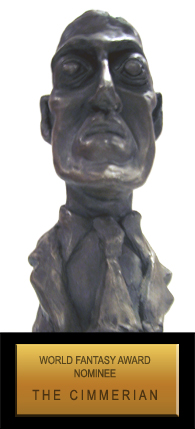After Aquilonia and Having Left Lankhmar: Sword-and-Sorcery Since the 1980s
Friday, July 25, 2008
posted by Steve Tompkins
[When Howard Andrew Jones writes about sword-and-sorcery and the desirability of “putting a new edge on an old blade,” it behooves those of us as protective of the subgenre as he is to pay attention, and perhaps pay him the compliment of trying to put our own thoughts in order. To that end, and with a bemused glance at a June 22 post by Gary Romeo, who never loses an opportunity to generalize about Howard purists even if he did lose the chance to celebrate the centennial of his nearest and dearest, I’m rolling out the following article, originally written in 2006 for an anthology that apparently could not be more snake-bitten were it to traipse barefoot through Stygia]
The subgenre of modern fantasy with which Robert E. Howard is nearly synonymous died down in the mid-1980s but did not die out. Far from it; sword-and-sorcery proved to be as difficult to kill as many of its protagonists. But before we can celebrate Howard’s legacy by following the subgenre’s fortunes for the last several decades, we need to establish what we mean by sword-and-sorcery. For starters, what is meant at least for the purposes of this article is an approach to heroic fantasy that became aware of itself when Howard decisively expanded on the promise and premise of Lord Dunsany’s 1908 story “The Fortress Unvanquishable Save for Sacnoth” with “The Shadow Kingdom” in 1929.
The verb “expanded” is chosen with no disrespect whatsoever intended toward Dunsany’s story; it is possible that during his much-debated involvement with sword-and-sorcery, L. Sprague de Camp never did the subgenre more of a favor than when he selected “The Fortress” for his anthology The Fantastic Swordsmen (1967).
(Here, on the other hand, Leo argues that the only place for poor old “Sacnoth” in an S & S muscle car is: the ejector seat)












